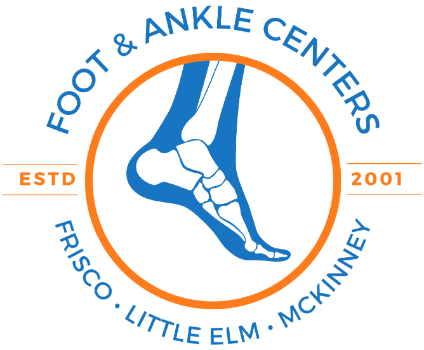CRPS and Ongoing Foot Pain: What You Should Know
Saturday, July 12, 2025 | By: Foot & Ankle Centers of Frisco and Plano
Did you know that chronic foot pain affects millions of people monthly, yet many struggle to identify the root cause? One potential culprit lurking beneath the surface is Complex Regional Pain Syndrome (CRPS). CRPS is often characterized by ongoing pain that can escalate into debilitating episodes with symptoms such as burning sensations, muscle spasms, and temperature fluctuations in the affected limb. Recognizing these symptoms early and seeking guidance from medical professionals is crucial. In this post, we will delve deep into CRPS, its signs, potential treatments, and why timely diagnosis is critical to alleviating chronic foot pain.
Understanding Complex Regional Pain Syndrome (CRPS)
Complex Regional Pain Syndrome (CRPS) is a chronic pain condition that typically affects an arm or a leg but can occur in any part of the body. Patients may experience severe pain, swelling, and changes in the skin that can last for an extended period. The disorder is believed to stem from dysfunction in the central nervous system. The characteristics of CRPS can vary; however, the pain is usually disproportionate to the initial injury and may worsen over time.
Forms of CRPS
There are primarily two recognized types of CRPS:
1. CRPS-I (Reflex Sympathetic Dystrophy): This form occurs without a confirmed nerve injury and is often precipitated by surgery or trauma. Symptoms include burning or stabbing pain, swelling, stiffness, and changes in skin color and temperature.
2. CRPS-II (Causalgia): This variant involves more severe symptoms linked with a confirmed nerve injury. The overall impact can be more significant, leading to long-term complications.
Symptoms of CRPS
Identifying the symptoms of CRPS is essential for early diagnosis and management. Common signs include:
- Burning or Stabbing Pain: A hallmark symptom of CRPS. The intensity can fluctuate, making day-to-day experiences challenging.
- Swelling or Stiffness: Patients may notice localized swelling which can sometimes impact overall mobility.
- Skin Changes: Affected areas may exhibit significant color changes from pale to red and a fluctuating temperature that can feel either hot or cold to the touch.
- Muscle Spasms: Muscle twitching or spasms can accompany pain, leading to further discomfort.
- Tremors or Twitching: Some patients report involuntary movements that can interfere with daily tasks.
Pain Mechanisms in CRPS
In CRPS, it is believed that the nervous system becomes hyperactive, resulting in pain signals being amplified. This phenomenon can be alarming and confusing for patients, as the pain often appears out of proportion to any damage previously sustained.
Research suggests that the condition may involve:
- Neural Injury: Disruptions in the nerve signals can lead to a miscommunication between the affected area and the brain.
- Inflammation: Irritation or inflammation in the affected site can contribute to pain signals and discomfort.
- Psychological Factors: Stress and psychological responses can exacerbate symptoms, complicating the clinical picture.
Diagnosis of CRPS
Early diagnosis plays a pivotal role in managing CRPS effectively. Doctors typically utilize a combination of medical history, physical examinations, and pain assessments to reach a diagnosis. Some diagnostic tools may include:
- Physical Exams: Assessing the affected limb for swelling, temperature changes, and sensitivity.
- Imaging Tests: X-rays or MRIs to identify any physical injuries or abnormalities.
- Nerve Blocks: In some cases, physicians may perform nerve blocks to determine the source of pain, offering relief and aiding in diagnosis.
As patients often encounter challenges gaining clarity on their condition, staying proactive and open with their healthcare providers is beneficial.
Treatment Options for CRPS
Treating CRPS can be multifaceted, often requiring a holistic approach to effectively manage pain and improve quality of life. Possible treatment avenues include:
1. Medications: Commonly prescribed medications may include:
- Pain Relievers: Non-steroidal anti-inflammatory drugs (NSAIDs) help alleviate general inflammation and pain.
- Nerve Pain Medications: Medications like gabapentin may assist with neuropathic pain.
- Corticosteroids: Short-term use of steroids can help manage inflammation.
2. Physical Therapy: Engaging in a tailored activity regimen can help strengthen muscles and improve mobility. Physical therapy often emphasizes gradual progression to prevent further pain aggravation and restore function.
3. Occupational Therapy: Occupational therapists help adapt daily tasks and provide strategies for pain management, enhancing the overall daily functioning of patients.
4. Psychological Counseling: Therapy can be advantageous for addressing emotional stressors related to chronic pain. Cognitive-behavioral therapy may serve as an option for coping.
5. Complementary Approaches: Depending on individual preferences, some may find relief through acupuncture, biofeedback, or mindfulness techniques.
Lifestyle Changes
Alongside medical interventions, adopting lifestyle changes can contribute significantly to managing CRPS and improving overall well-being. Suggestions for incorporating these changes include:
- Dietary Adjustments: Nutrition plays a critical role in combating inflammation. Opting for an anti-inflammatory diet rich in fruits, vegetables, whole grains, and healthy fats can support recovery.
- Regular Exercise: Engaging in low-impact exercises can work wonders for maintaining muscle tone and mobility.
- Stress Management: Integrative practices such as yoga and meditation improve mental well-being and can offer valuable coping mechanisms for stress-induced pain exacerbation.
When to Seek Help
If ongoing foot pain is troubling you, pay attention to the signs. Consult a healthcare professional, especially if you experience:
- Persistent foot or ankle pain that does not subside over time.
- Sudden changes in color or temperature of the affected limb.
- Symptoms that begin to interfere with daily life.
Conclusion: So Now What?
Understanding Complex Regional Pain Syndrome is the first step toward regaining control over your foot health. Early diagnosis is pivotal in treating ongoing foot pain and enhancing quality of life. If you are experiencing symptoms consistent with CRPS, our team at Foot & Ankle Centers is here to help. Remember, you are not alone on this journey. Taking action today can change your tomorrow. The path to recovery begins with the right knowledge and support, so invest in your foot health now!


Leave a comment
0 Comments